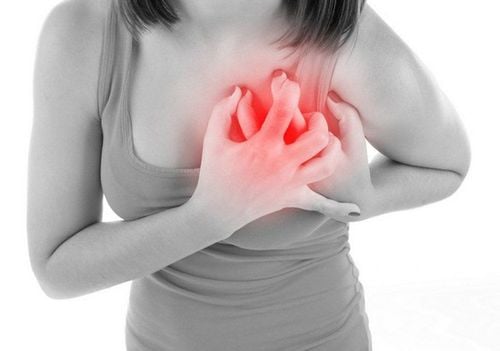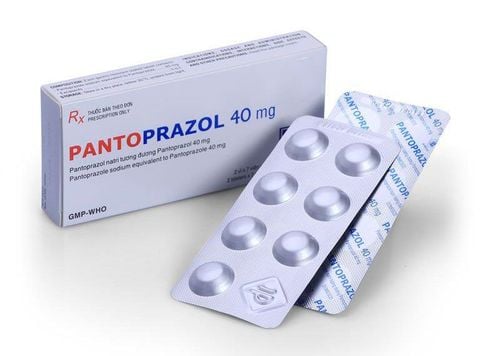This is an automatically translated article.
Posted by Master, Doctor Mai Vien Phuong - Department of Examination & Internal Medicine - Vinmec Central Park International General HospitalThe main underlying mechanisms of noncardiac chest pain include gastroesophageal reflux, esophageal dysfunction, and esophageal hypersensitivity. Gastroesophageal reflux disease may be the most common cause of noncardiac chest pain.
1. Overview of noncardiac chest pain
Noncardiac chest pain was defined as recurrent chest pain indistinguishable from ischemic heart attack after cardiac causes were excluded. This is a common disorder, greatly affecting the health and life of patients. However, despite its chronic nature, noncardiac chest pain did not affect patient mortality.The main underlying mechanisms of noncardiac chest pain include gastroesophageal reflux disease, esophageal dysfunction, and esophageal hypersensitivity. Gastroesophageal reflux disease may be the most common cause of noncardiac chest pain. Esophageal dysfunction affects only a small number of patients. Esophageal hypersensitivity may present in patients with non-GERD-associated chest pain regardless of esophageal dysfunction.
2. Non-cardiac chest pain symptoms
Patients with noncardiac chest pain may present with squeezing, tightening, or burning chest pain, which may radiate to the back, neck, arms, and jaw and is indistinguishable from heart-related chest pain. .In fact, patients with a history of coronary heart disease (coronary artery disease) may also experience noncardiac chest pain. Therefore, all patients with noncardiac chest pain should first be evaluated by a cardiologist to rule out symptoms of cardiac angina.
Distinguishing on clinical grounds between cardiac angina and noncardiac angina is a very difficult task. Furthermore, patients with noncardiac chest pain tended to report a higher incidence of chest pain and greater pain intensity. They also use more common emotional and emotional terms than patients with ischemic heart disease.
To the cardiologist, any two of the following clinical features suggest atypical cardiac angina, and only one or none of these features is indicative of cardiac angina:
Chest discomfort, pressure or heaviness that lasts for several minutes: Pain caused by exertion, emotion, exposure to cold or a large meal Pain that is relieved by rest or nitroglycerine is usually a sign of chest pain.
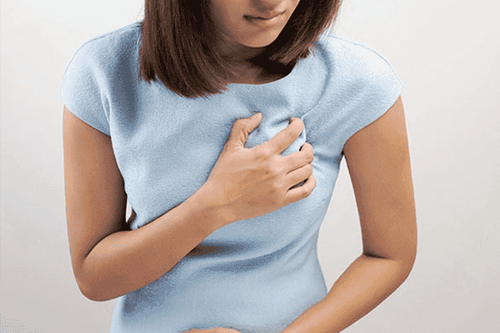
3. Non-cardiac chest pain stemming from gastroesophageal reflux disease
Gastroesophageal reflux is the most common esophageal cause of noncardiac chest pain in patients with and without coronary artery disease.Many studies have shown an association between GERD and noncardiac chest pain. However, association does not yield a causal relationship. Resolving or ameliorating chest pain symptoms in response to antireflux drug therapy provides the missing causal link.
Locke et al demonstrated that noncardiac chest pain was more commonly reported in patients (37%) who experienced heartburn symptoms at least weekly, compared with 30.7% in those with no heartburn. frequently (less than once a week) and 7.9% of those without any GERD symptoms.
In another community-based study, the authors found that 53% of all noncardiac chest pain patients experienced heartburn and 58% acid reflux. Stahl et al found in a small sample of patients with noncardiac chest pain that 61.5% had symptoms related to GERD.
In 3 different studies evaluating the role of PPI testing in patients with noncardiac chest pain, the authors found GERD-related symptoms in 68%-90% of patients.
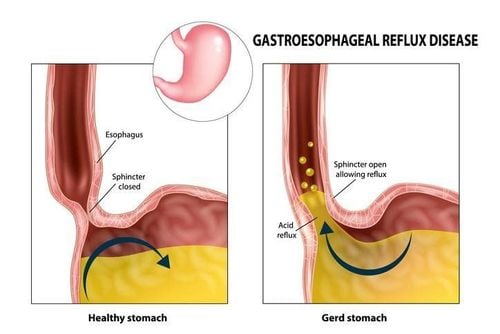
4. Role of esophageal pH measurement in 24 hours
Studies examining esophageal pH during a 24-hour ambulatory period have demonstrated that approximately half of patients with noncardiac chest pain have abnormal esophageal acid exposure.Stahl et al evaluated 13 patients with consecutive noncardiac chest pain and found that 69.2% had an abnormal pH test.
Beedassy et al evaluated 104 patients with noncardiac chest pain and noted that 48% of them had an abnormal pH test. It should be noted that only 21% of the 52 patients who reported chest pain during the study had concomitant acid reflux. Interestingly, only 10 out of 52 subjects had a positive symptom index (>50%).
Similarly, DeMeester et al demonstrated that 46% of patients with chest pain had symptoms associated with an acid reflux event as recorded during pH testing.
Pandak et al found abnormal pH in 42% of patients with noncardiac chest pain. In 3 different studies evaluating the role of PPIs in reflux disease, the authors found an abnormal 24-hour esophageal pH in 37.5%-67% of patients with chest pain. by heart. In a study from Asia, 34.3% of patients with noncardiac chest pain had at least 1 abnormal pH parameter.
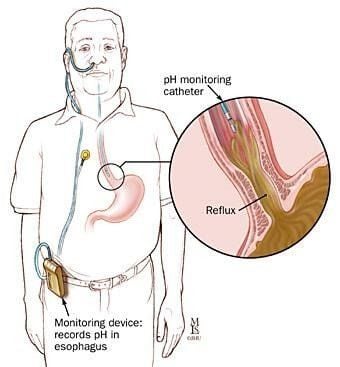
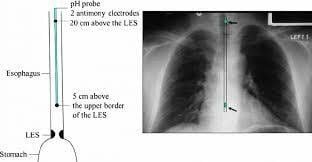
5. Endoscopic manifestations of patients with noncardiac chest pain
The presence of esophageal mucosal abnormalities consistent with GERD appears to be less common in patients with noncardiac chest pain than with GERD symptoms or exposure to excess esophageal acid.From various studies, the range is from 2.5%-75%. In 3 different studies evaluating the role of PPIs in patients with noncardiac chest pain, the authors found endoscopic involvement of GERD in 44%-75% of patients with noncardiac chest pain.
In all of these studies, low-grade erosive esophagitis was the main endoscopic finding associated with GERD. A recent study by Dickman et al evaluated higher gastrointestinal findings in patients with noncardiac chest pain compared with those with only GERD-related symptoms using a large multicenter cohort. . In the noncardiac chest pain group, 28.6% had hiatal hernia, 19.6% erosive esophagitis, 4.4% Barrett's esophagus, and 3.6% esophageal stricture/stenosis. The prevalence of these findings was significantly lower in the noncardiac chest pain group when compared with the GERD group.
From this study, it appears that GERD-associated mucosal abnormalities are not uncommon in the esophagus of patients with noncardiac chest pain. However, the prevalence of these anatomical findings is lower than what has been observed in patients with GERD. Importantly, patients with noncardiac chest pain may also present with Barrett's esophagus, although this is uncommon.
Currently, esophagogastroduodenoscopy will help detect the disease early and take timely measures to treat gastroesophageal reflux disease. Vinmec International General Hospital is one of the prestigious hospitals, trusted by a large number of patients for medical examination and treatment. Customers who choose gastroesophageal endoscopy at Vinmec will enjoy advantages such as:
Experienced doctors in endoscopy. Modern equipment, high treatment efficiency: C-Am system, intraoperative ultrasound machine helps to locate the position and help the surgeon to monitor the patient's condition during and after surgery. to be able to bring good endoscopic results, limit complications during and after surgery. Germany's most modern flexible endoscope system for clear, accurate images, easy to use. Intraoperative consumables are passed through strict sterilization testing procedures, Vinmec only uses high quality products and especially is used only once to ensure sterility and deliver results. good for the patient. With modern facilities, accurate diagnosis, selection of appropriate surgical methods, customers only take a single dose of prophylactic antibiotics, do not have to use high-dose antibiotics for a long time, no pain, no hospital stay. short, only 1-2 days. Therefore, saving treatment costs Professional services: Modern civilized disease prevention system, each patient one room is fully serviced from monitoring disease parameters, meals, rest regimes Rest, exercise, health education, each patient room is equipped with amenities like a hotel apartment, patient information is confidential.
Please dial HOTLINE for more information or register for an appointment HERE. Download MyVinmec app to make appointments faster and to manage your bookings easily.
References: Ronnie Fass and Sami R Achem, Noncardiac Chest Pain: Epidemiology, Natural Course and Pathogenesis, J Neurogastroenterol Motil. 2011 Apr; 17(2): 110–123.





